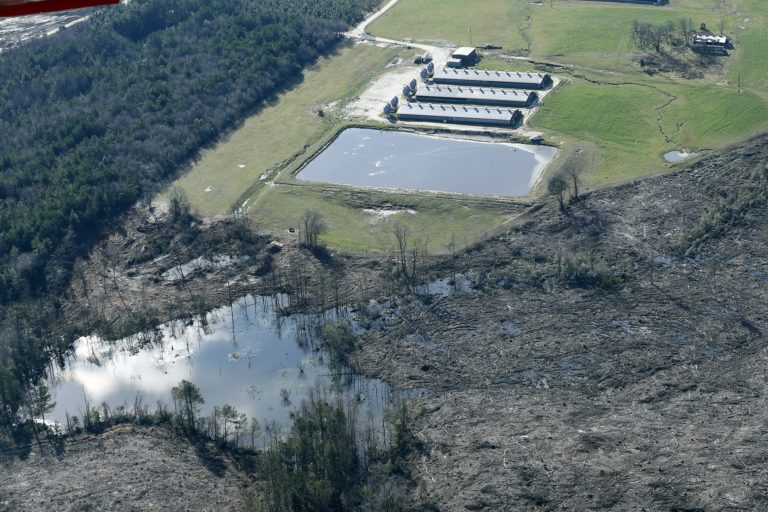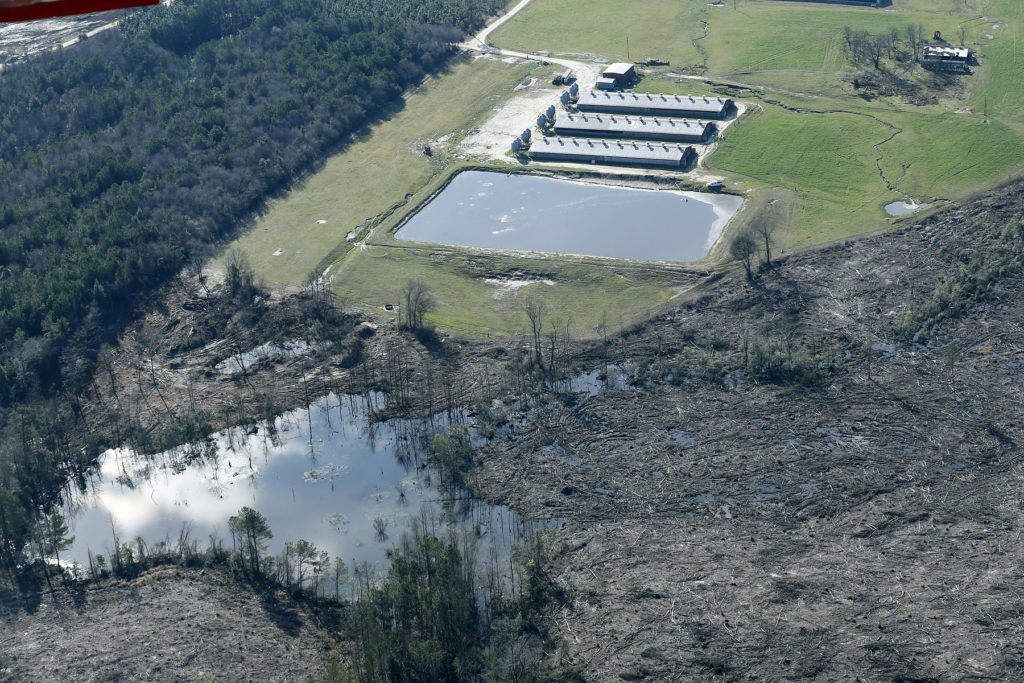
About a month ago, I took a trip out to the Black River basin after seeing television ads paid for by the hog industry that talk about how the Black River is “pristine.” Well, the results of my water sampling on January 22, 2016, the day those ads began running, showed otherwise: 100% of the samples exceeded the State standard for fecal coliform bacteria.
As a scientist, I know that replication is key for any water quality analysis, so I went back to the Black River basin on February 11th to collect some more samples. And guess what? Once again, 100% of the samples exceeded the State standard for fecal coliform bacteria.
Now I don’t want anyone to get me wrong. The Black River is aesthetically an incredibly beautiful and special place. It is home to some of the oldest stands of cypress trees in the world, some trees being thousands of years old. But aesthetic beauty shouldn’t be confused with water quality as the hog industry would like you to believe.
The Black has some amazing natural conditions that are able to mitigate many of the visible impacts of swine pollution. Large swamp buffers absorb nutrients, natural springs dilute pollution, and relatively fast-moving flow makes sure that pollutants flush downstream before their impacts can be fully realized. That doesn’t mean that hog facilities don’t pollute public waters. In fact, they do. And it doesn’t mean that the impacts of water pollution from hog operations isn’t felt far downstream. In fact, it is.

I live on the lower Cape Fear, in Wilmington, where we’ve been experiencing the effects of too many nutrients since industrialized animal production took over southeastern North Carolina more than two decades ago. To explain simply, nutrients like nitrogen and phosphorus from animal waste facilitate unnaturally rapid growth of algae, which can be toxic to humans and animals. Dead and decaying algae reduces oxygen in the water leaving dissolved oxygen levels that are too low for aquatic life to survive, which means fish die. Then we have toxic algae, dead fish, plus the fecal bacteria I found in my water samples, and that makes me worry a lot about letting my daughters swim in our river.
The State government recognized the problem of low dissolved oxygen in the lower Cape Fear about 15 years ago, and at that time promised to fix it. Time passed without much progress, and then Gov. McCrory’s administration decided on a new approach. Instead of controlling pollution from animal production, they’ve decided to ignore the problem and simply change the water body designation of the lower Cape Fear from what it is today – a large estuary connecting the upper river to the Atlantic Ocean – to a swamp with the stroke of a pen. This action is completely unjustified and unsupported by science but it would allow for lower levels of oxygen in the Cape Fear, which only benefits polluters.
The thing is, the lower Cape Fear is about the furthest thing from a swamp. It’s not stagnant or shallow. It’s deep, fast, and it’s the only river in North Carolina connected directly to the Atlantic Ocean. It supports a nursery for anadromous fish like striped bass and endangered atlantic and short-nosed sturgeon. Instead of protecting our rivers and the people that rely on them for their livelihood and enjoyment, our government is protecting polluters. And we told them so in a comment letter submitted on February 12th.
Now the hog industry is airing paid radio advertisements calling my work “deceptive,” a claim riddled with irony. The hog industry has relied on deception for decades, hiding behind the image of the simple family farmer, and crafting contracts designed to perpetuate that image. The fact that a “farm” is “family-owned” doesn’t mean much to me. What matters is who they’re working for, who owns the animals they feed, and whether those animals are produced in a way that protects human health and the environment. Most of the time, it’s a foreign-owned corporation behind the scenes, one that might be able to afford a paid multimedia campaign. That’s a big difference from the farms of old.
Those corporations, like Smithfield Foods, could also afford to invest in advanced waste treatment technologies for their contract operations. I think that would buy a lot more support than investing in advertisements designed to hide the truth.